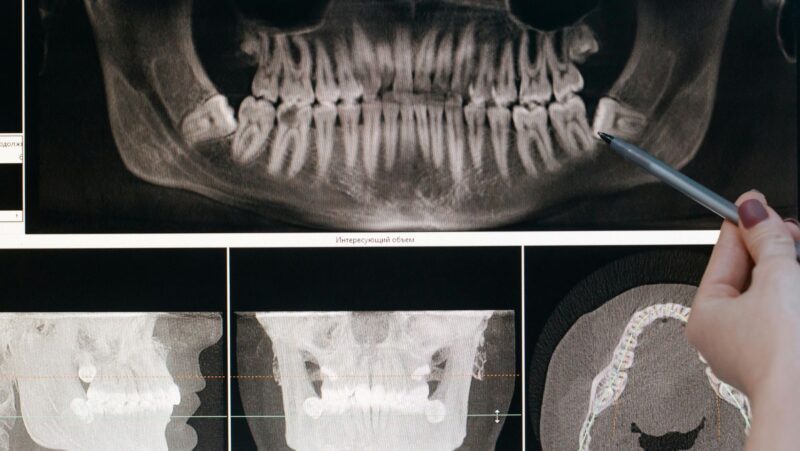
Ever wake up feeling like you’ve been hit by a truck? Maybe a nasty fever or a throbbing pain makes you wonder where to seek help. The first place you’ll think of going to is either an urgent care facility or the emergency room (ER).
But what is the difference between urgent and emergency care? Urgent care and emergency rooms both offer medical attention, but they serve different purposes. Knowing the key distinctions between urgent care and ERs allows you to save valuable time and money and receive the most appropriate care for your situation.
Quick Answer:
Urgent care treats non-life-threatening conditions like ear infections or sprains, with quicker wait times and lower costs than ERs, which handle critical situations like chest pain or severe bleeding.
Emergency Care: When It’s a Medical Emergency
Places like the Idaho Falls Community Hospital have emergency rooms that are specifically designed to handle critical, life-threatening situations. Unlike urgent care centers, ERs are equipped with advanced medical equipment and have a team of highly trained emergency medicine professionals readily available. These specialists can provide lifesaving care for a wide range of emergencies, from severe allergic reactions to traumatic injuries.
For instance, if you experience a sudden and severe headache accompanied by vision changes or weakness, an ER visit is crucial. ERs are also equipped to handle complex medical emergencies like strokes, heart attacks, and severe bleeding. Their ability to perform on-site diagnostics like CT scans and MRIs allows for a swift diagnosis and immediate treatment, which can significantly improve patient outcomes.
When to Seek Immediate ER Care
Remember, the golden rule with ERs is ‘when in doubt, go.’ Don’t hesitate to seek emergency care if you suspect a life-threatening condition. Some clear red flags include sudden loss of consciousness, severe head injuries, or uncontrollable vomiting. In these situations, every minute counts. Acting quickly and seeking immediate medical attention can significantly improve the chances of a full recovery.
Other warning signs that necessitate an ER visit include the following:
- Difficulty breathing or sudden shortness of breath
- Severe chest pain, pressure, or tightness
- Uncontrolled bleeding that won’t stop with pressure
- Sudden weakness, paralysis, or numbness in any part of the body
- Severe abdominal pain
- Seizures or convulsions
- Severe burns
If you’re unsure whether your condition requires urgent care or an ER visit, it’s always better to err on the side of caution and seek medical attention. You could save your own life or that of another person.
Urgent Care: Your Go-To for Non-Life-Threatening Needs
If you believe your condition isn’t too severe yet needs medical intervention, consider looking for hospitals with urgent care services. Urgent care centers are walk-in clinics equipped to handle a variety of non-life-threatening medical issues. Think cuts that need stitches, ear infections that require antibiotics, or sudden allergic reactions that need immediate attention. These clinics are staffed by healthcare professionals like physician assistants and nurse practitioners who can diagnose and treat a wide range of conditions.
They often extend their hours beyond typical doctor’s office hours and offer weekend availability. This flexibility makes them a convenient option for situations that can’t wait for your regular doctor’s appointment but aren’t emergencies.

For instance, if your child wakes up in the middle of the night with a fever and earache or if you experience a sudden flare-up of your sinusitis over the weekend, urgent care can provide prompt medical attention.
Inside Urgent Care: Equipped for Efficient Treatment
What is the difference between urgent and emergency care in terms of equipment? Urgent care centers are equipped with on-site diagnostic tools like X-ray machines, allowing for quick evaluation of your condition. These can include urinalysis to diagnose urinary tract infections or X-rays for broken bones, sprains, or fractures. Having these tools readily available helps medical professionals make a swift diagnosis and develop a treatment plan on the spot.
They can prescribe medications, perform minor procedures like draining abscesses or removing foreign objects from the eye, and offer basic treatment for common illnesses and injuries. This might include providing medication for bronchitis, treating a sprained ankle with bandages and anti-inflammatory medicines, or stitching up a minor cut.
Plus, compared to ERs, urgent care visits generally boast shorter wait times and lower costs, making them a more practical choice for many non-emergency situations.
Benefits of Urgent Care
Faster Wait Times
Unlike emergency rooms, which can have long wait times due to emergencies, urgent care centers typically see patients much quicker. Shorter wait times at urgent care stem from two factors: they address less complex medical issues and prioritize seeing patients quickly.
You’ll likely be seen by a medical professional within a short time of arriving, allowing you to get the treatment you need and get back to your day. Wait times can vary depending on the number of patients being treated, but they’re typically significantly shorter than those experienced in ERs.
Cost-Effectiveness
Urgent care visits are generally much less expensive compared to ER visits. Centers providing urgent care services offer quicker service due to a combination of factors. They typically manage less intricate medical conditions, and their operational costs are lower compared to ERs.
ERs are equipped to handle life-threatening situations and have a team of specialists readily available, which contributes to higher overall costs. Urgent care visits typically involve a co-pay similar to a doctor’s office visit, making them a more budget-friendly option for many people.
Convenience
Many urgent care centers offer extended hours and walk-in availability, making them a convenient option for evenings, weekends, or when you don’t have a scheduled appointment with your doctor. This flexibility allows you to seek medical attention when it’s most convenient for you.
You don’t need to wait for a scheduled appointment or endure long wait times in an ER. Some urgent care centers even offer online check-in options, allowing you to save time upon arrival.
Choosing Between Urgent Care and Emergency Care
Now that you know the difference between urgent and emergency care, learn how to navigate which option is best for you.
Seek Urgent Care When…
Seek urgent care when you need medical attention for a non-emergency situation but can’t wait for your next doctor’s appointment. Examples include:
- Sudden illnesses like the flu.
- Minor injuries like sprains or cuts.
- Flare-ups of chronic conditions like allergies or sinusitis.
Urgent care centers are suitable options for situations that require prompt medical attention but aren’t life-threatening. For instance, if you wake up with a high fever and chills or experience a sudden allergic reaction that causes mild swelling or difficulty breathing, urgent care can provide prompt diagnosis and treatment. Once there, don’t be afraid to tell the doctor exactly what you’re feeling and ask any questions you may have. Doing so will make your doctor’s visit much better for your overall health.
Go Straight to the ER for…
Remember, emergency rooms handle critical situations. Don’t hesitate to call 911 or head to the ER for severe symptoms like chest pain, uncontrollable bleeding, difficulty breathing, or head injuries. In emergencies, time is of the essence.

Early intervention and treatment in these situations can significantly improve the chances of a full recovery.
Unsure? Call Emergency Services
If you’re unsure whether your condition is an emergency, call 911 anyway or proceed to the nearest emergency room. It’s always better to get checked out by a medical professional than risk delaying critical care. Seeking immediate medical attention in an emergency can mean the difference between life and death. Playing it safe is always the best course of action when you start to have doubts.
Additional Considerations
Deciding whether to go to an urgent care facility or an emergency room doesn’t only fall on their services or your current condition. Other considerations can help you choose the ideal option.
Cost Comparison
Awareness of the cost difference between urgent care and ER visits empowers you to make informed healthcare decisions. On average, urgent care centers charge significantly less than emergency rooms.
The speedier service at urgent care centers is due to two main reasons. First, they handle less complex medical concerns. Second, they prioritize seeing patients efficiently. Additionally, ERs are equipped to manage life-threatening situations and require a team of highly trained specialists to be readily available, which contributes to their higher overhead costs.
Here’s a general comparison:
- Urgent Care Visit: Typically involves a co-pay similar to a doctor’s office visit, making it a more budget-friendly option for many common illnesses and injuries.
- ER Visit: Carries a higher cost due to advanced equipment, specialist care, and the potential for additional tests and procedures. You may incur a higher co-pay or deductible depending on your insurance plan.
Insurance Coverage
Checking with your insurance provider beforehand is crucial. Understanding your coverage for urgent care and emergency room services can help you anticipate potential out-of-pocket costs and make informed choices when seeking medical attention. Knowing your coverage details can also help avoid surprise medical bills. Some insurance plans may require prior authorization for ER visits unless it’s a true emergency.
Conclusion
You should now know the answer to the question, ‘What is the difference between urgent and emergency care?’ By grasping the distinctions between urgent care and emergency rooms, you can make better decisions regarding your healthcare. Urgent care is ideal for non-life-threatening situations, while emergency rooms handle critical medical needs.
When in doubt, always prioritize your health and seek emergency care. Keep this information handy and share it with others who might find it beneficial!












